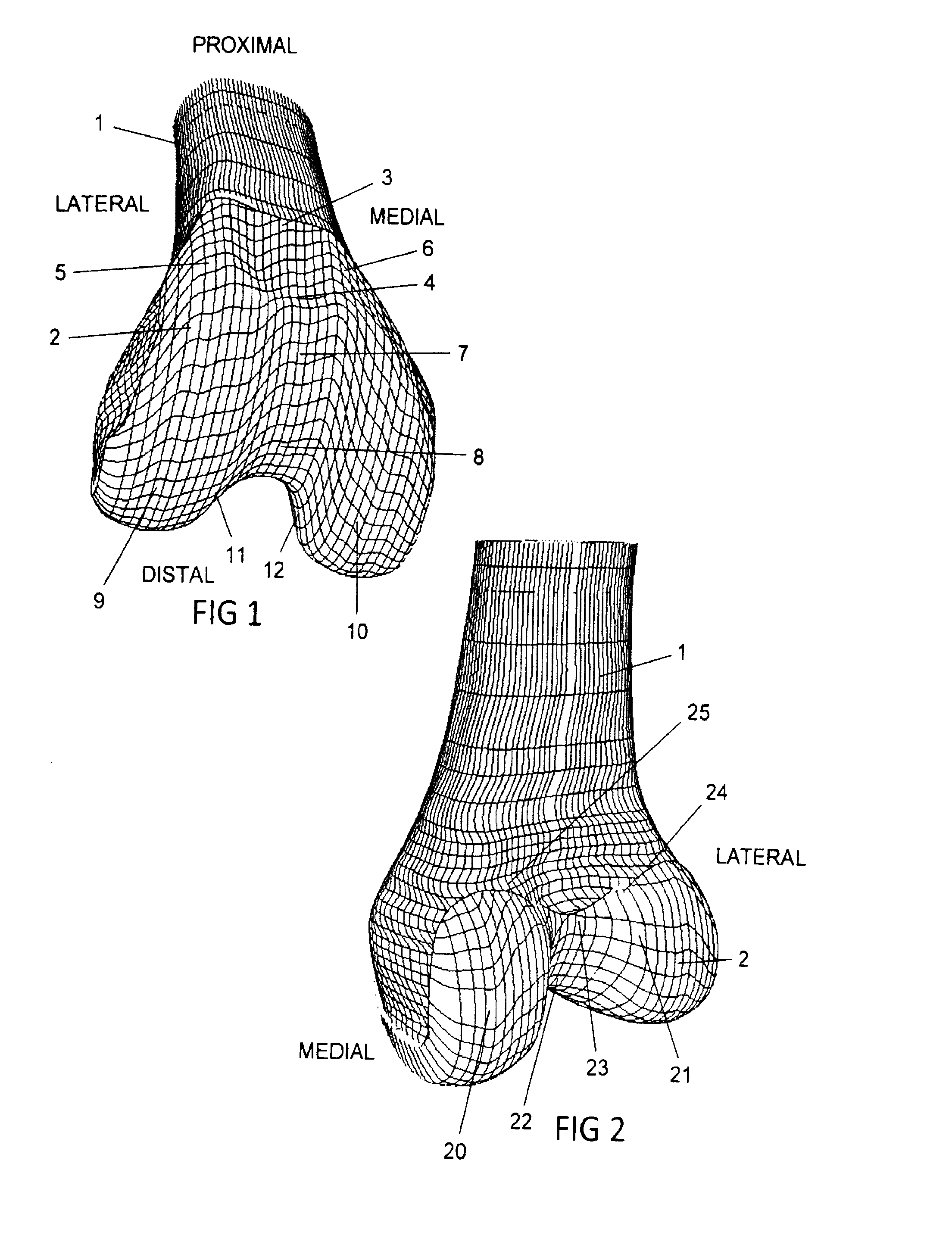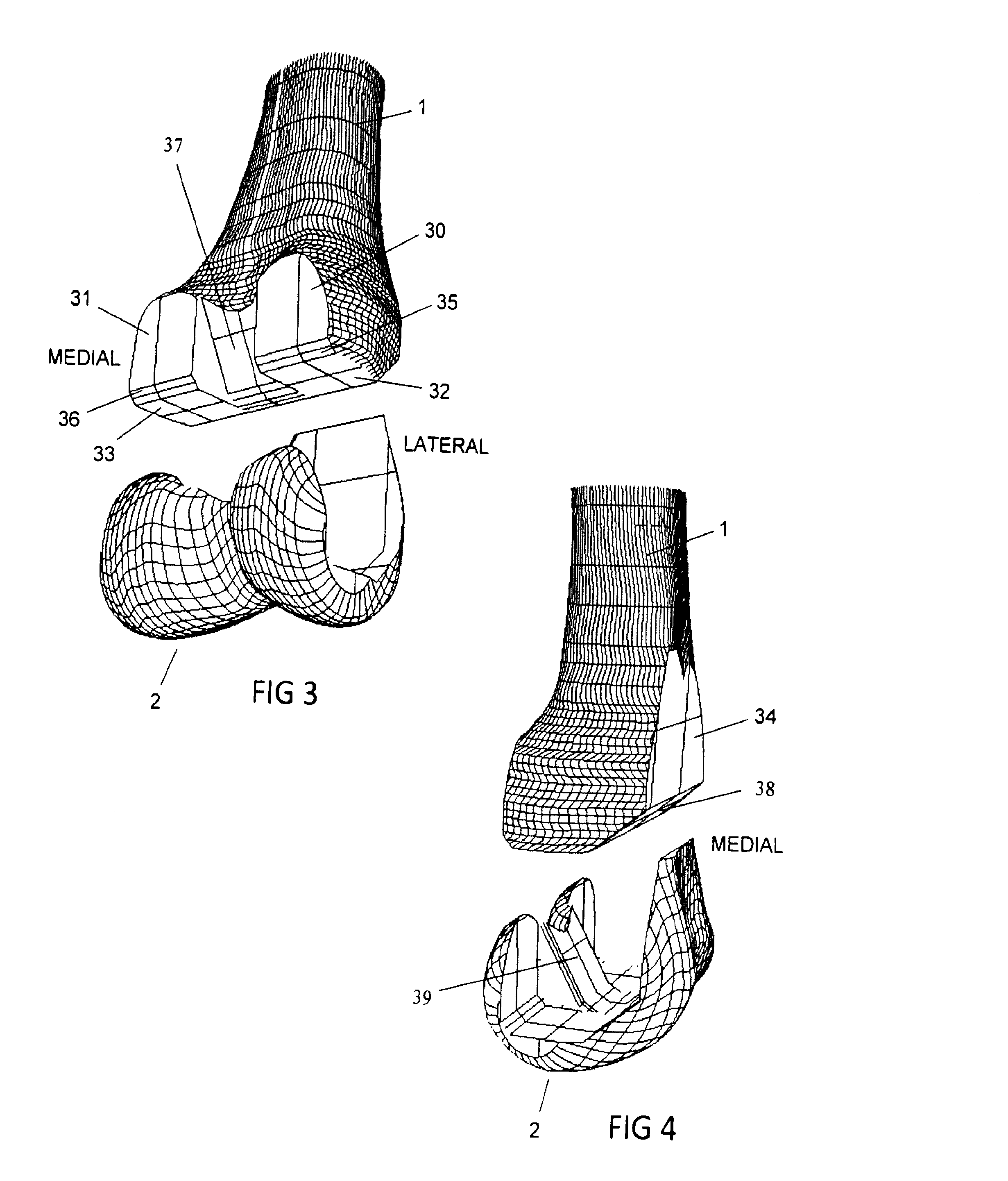Total Knee Replacement Implant Based on Normal Anatomy and Kinematics
a total knee and implant technology, applied in the field of knee implants, can solve the problems of extreme manufacturing tolerances, and achieve the effects of promoting edge loading, high flexion, and avoiding excessive edge loading
- Summary
- Abstract
- Description
- Claims
- Application Information
AI Technical Summary
Benefits of technology
Problems solved by technology
Method used
Image
Examples
Embodiment Construction
[0024]In FIGS. 1 and 2, the distal femur 1 is shown with the femoral component 2 fixed in place. The outer bearing surface of the femoral component is a replica of the anatomic distal femur for the purpose of illustration, but this can be modified slightly for purposes of smoothing, making surfaces of definable geometrical parameters, or manufacturability.
[0025]A baseline anatomically representative femur is defined as a femoral prosthesis comprising a distal bearing surface that duplicates that of an anatomic femur. The distal bearing surface shape can be taken from an individual natural femur. Alternatively, it can also be an average shape determined for a collection of cadaveric knees. It can also be an average shape determined from a collection of MRI scans, either normal knees, or knees with some degeneration as seen in osteoarthritis. The averaging method can either be by a scaling process followed by the definition of numerous sagittal slices and then averaging the slices, fr...
PUM
 Login to View More
Login to View More Abstract
Description
Claims
Application Information
 Login to View More
Login to View More - R&D
- Intellectual Property
- Life Sciences
- Materials
- Tech Scout
- Unparalleled Data Quality
- Higher Quality Content
- 60% Fewer Hallucinations
Browse by: Latest US Patents, China's latest patents, Technical Efficacy Thesaurus, Application Domain, Technology Topic, Popular Technical Reports.
© 2025 PatSnap. All rights reserved.Legal|Privacy policy|Modern Slavery Act Transparency Statement|Sitemap|About US| Contact US: help@patsnap.com



